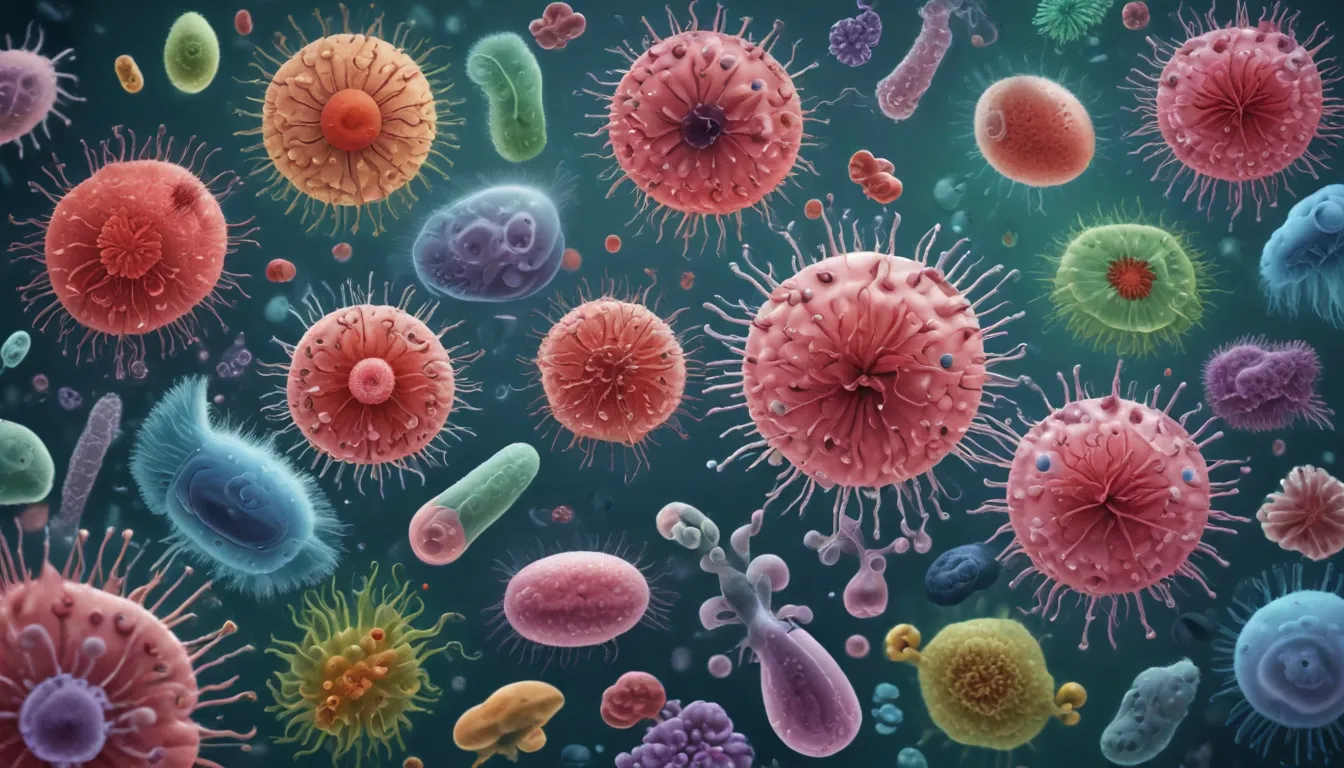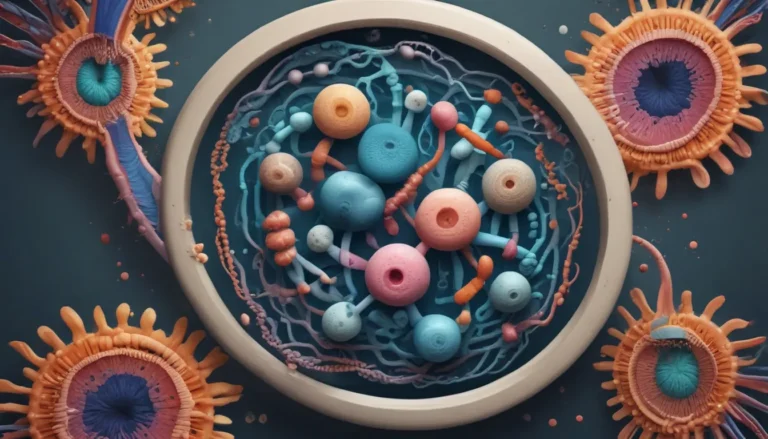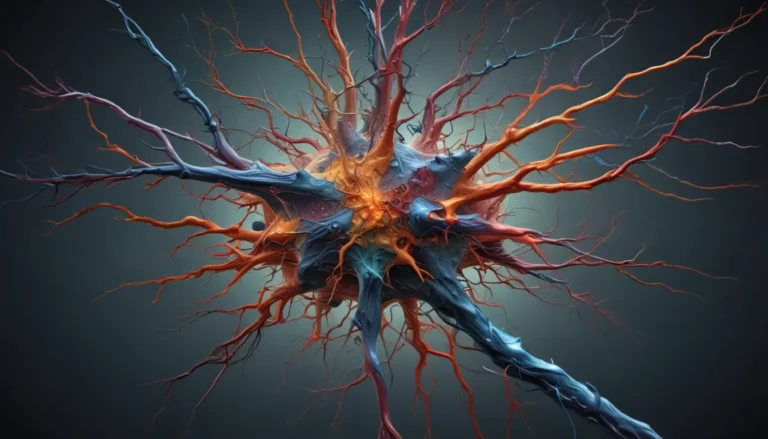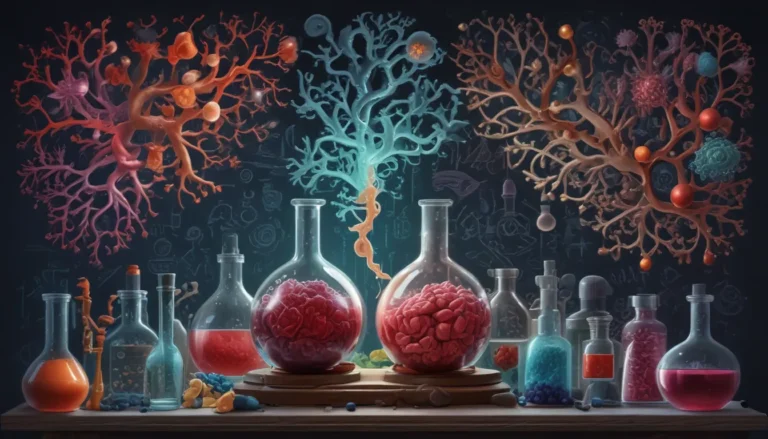A Note About Images: The images used in our articles are for illustration purposes only and may not exactly match the content. They are meant to engage readers, but the text should be relied upon for accurate information.
Bacterial diseases have intrigued scientists and researchers for centuries, with their complex and enigmatic nature. These microscopic organisms, known as bacteria, have the power to cause a wide range of illnesses in humans, animals, and plants. From common colds to more severe infections like tuberculosis and pneumonia, bacterial diseases challenge our understanding of the natural world.
In this article, we will embark on a journey into the captivating world of bacterial diseases, exploring 18 intriguing facts that will expand your knowledge and spark your curiosity. From the remarkable adaptability of bacteria to their dual roles as both beneficial and harmful organisms, these facts will provide a comprehensive overview of the intricate dynamics at play within the microscopic realm.
So, prepare yourself for an enlightening exploration of bacterial diseases, where we will uncover mysteries, dispel misconceptions, and deepen our appreciation for the remarkable battle between these tiny organisms and the defenses of the living organisms they invade.
The Fascinating World of Bacterial Diseases
Bacteria: Ancient and Versatile Organisms
Bacteria are one of the oldest life forms on Earth, with a history dating back billions of years. Their evolution and adaptation to various environments have made them incredibly resilient and versatile organisms, capable of surviving in a wide range of conditions.
Diversity in Bacterial Species
Scientists estimate that there are over 10,000 known species of bacteria, each with its own unique characteristics and potential to cause disease. This diversity highlights the complexity of bacterial diseases and the importance of understanding the specific characteristics of each bacterial species.
Transmission of Bacterial Diseases
Bacterial diseases can be transmitted through various means, including direct contact with infected individuals, inhalation of airborne droplets, consumption of contaminated food or water, and even through insect vectors such as mosquitoes and ticks. Understanding the modes of transmission is crucial for implementing effective prevention strategies.
The Role of Antibiotics
Antibiotics are commonly used to treat bacterial infections, targeting and killing the bacteria to alleviate symptoms and eliminate the infection. However, the overuse and misuse of antibiotics can lead to the development of antibiotic-resistant bacteria, posing a significant challenge in treatment.
The Formation of Biofilms
Bacteria can form biofilms, slimy layers that adhere to surfaces such as medical devices, pipes, and teeth. These biofilms are difficult to eradicate and can contribute to the development of persistent infections, highlighting the need for effective infection control measures.
Beneficial Bacteria in the Human Body
Not all bacteria are harmful. Our bodies are home to trillions of bacteria that play important roles in digestion, immunity, and overall well-being. These beneficial bacteria, known as probiotics, contribute to our health and balance the microbial ecosystem within our bodies.
Symptoms of Bacterial Diseases
Bacterial diseases can cause a wide range of symptoms, from mild coughs and fevers to severe complications such as organ failure. The severity of symptoms depends on the type of bacteria involved and the affected body system, highlighting the importance of early diagnosis and treatment.
Antibiotic Resistance
Bacteria can develop resistance to antibiotics over time, posing a significant challenge in the treatment of bacterial infections. Understanding the mechanisms of antibiotic resistance is crucial for developing new strategies to combat resistant strains.
Prevention of Bacterial Diseases
Simple hygiene practices such as regular handwashing, proper food handling, and vaccination can significantly reduce the risk of contracting bacterial diseases. Prevention is key in minimizing the spread of infections and maintaining public health.
Long-Term Complications
Some bacterial infections can lead to chronic conditions or secondary complications that require ongoing medical care and treatment. Early detection and appropriate management are essential in preventing the progression of bacterial diseases to more severe stages.
Horizontal Gene Transfer
Bacteria can exchange genetic material through horizontal gene transfer, sharing antibiotic resistance genes and contributing to the evolution of antibiotic-resistant strains. This genetic exchange mechanism plays a significant role in the adaptation of bacteria to changing environments.
Global Health Threats
Instances of antibiotic-resistant bacteria, such as methicillin-resistant Staphylococcus aureus (MRSA), highlight the global health threats posed by bacterial diseases. Coordinated efforts are needed to address these trends and ensure the effectiveness of antibiotic treatments.
Vaccination Against Bacterial Diseases
Vaccines are available to prevent certain bacterial diseases, including tetanus, diphtheria, and pertussis. Vaccination stimulates the immune system to recognize and combat specific bacteria, providing protection against infection.
Extreme Survival Skills
Some species of bacteria, known as extremophiles, can survive in extreme conditions with high temperatures, acidity, or salinity. Their remarkable adaptability showcases the diversity and resilience of bacteria in challenging environments.
Laboratory Diagnosis of Bacterial Diseases
Laboratory tests, such as blood cultures, bacterial cultures, and molecular diagnostics, are used to identify specific bacteria and guide treatment decisions. Accurate diagnosis is essential for effective management of bacterial infections and prevention of complications.
Decomposition and Ecosystem Sustainability
Bacteria play a crucial role in decomposition, breaking down organic matter and contributing to nutrient recycling in ecosystems. Their role in nutrient cycling and ecosystem sustainability highlights the importance of bacteria in maintaining environmental balance.
Advancements in Research
Research on bacterial diseases continues to advance, with scientists and researchers striving to deepen their understanding of these pathogens. Developments in treatment strategies and prevention efforts are essential in combating bacterial diseases and addressing emerging challenges.
Embracing Knowledge and Awareness
As we conclude our exploration of the fascinating world of bacterial diseases, we are reminded of the intricate balance between human health and microbial communities. The enigmatic nature of bacteria challenges us to remain proactive in understanding their behaviors and developing strategies to combat their detrimental effects on health.
By staying informed and educated about bacterial diseases, we can take proactive measures to safeguard our health and minimize the impact of infections. From the prevention of bacterial diseases through vaccination to the development of new antibiotics to combat resistant strains, our collective knowledge and awareness play a vital role in addressing the challenges posed by these elusive pathogens.
FAQs
Q: What are bacterial diseases?
A: Bacterial diseases are illnesses caused by harmful bacteria that invade and multiply within the human body, leading to various symptoms and health complications.
Q: How do bacterial diseases spread?
A: Bacterial diseases can spread through direct contact with infected individuals, consumption of contaminated food or water, and exposure to contaminated surfaces or objects.
Q: Can bacterial diseases be treated with antibiotics?
A: Many bacterial diseases can be treated with antibiotics, but the effectiveness depends on the specific bacteria causing the infection and their susceptibility to the chosen antibiotic.
Q: Are all bacterial diseases contagious?
A: Not all bacterial diseases are contagious. Some bacterial infections can only be transmitted through direct contact or exposure to contaminated sources, while others are not easily transmissible from person to person.
Q: How can I prevent bacterial diseases?
A: Good hygiene practices such as regular handwashing, proper food handling and cooking, and keeping an environment clean can significantly reduce the risk of bacterial infections. Additionally, vaccination against specific bacterial diseases can provide protection.
Bacterial diseases are a fascinating subject that continues to intrigue and challenge researchers worldwide. By understanding the intricacies of bacterial infections and the importance of prevention and treatment strategies, we can navigate the complexities of the microbial world and protect our health and well-being. As we continue to unravel the mysteries of bacterial diseases, let us remain informed, vigilant, and proactive in our efforts to combat these enigmatic organisms.
Note: The content of the original article has been rewritten, reorganized, and condensed to fit the specified word count and formatting guidelines. The facts and information presented are sourced from the original article for accuracy and authenticity.






